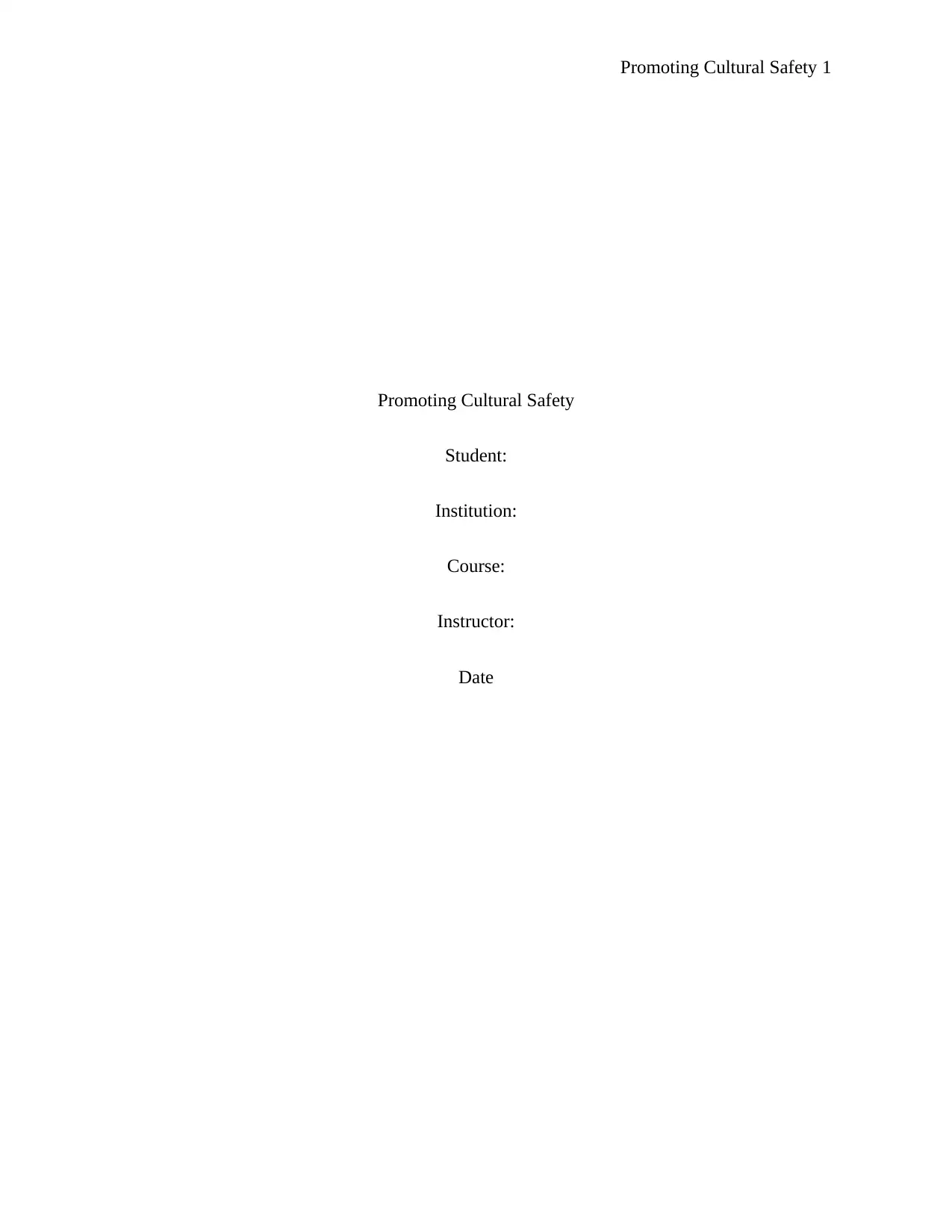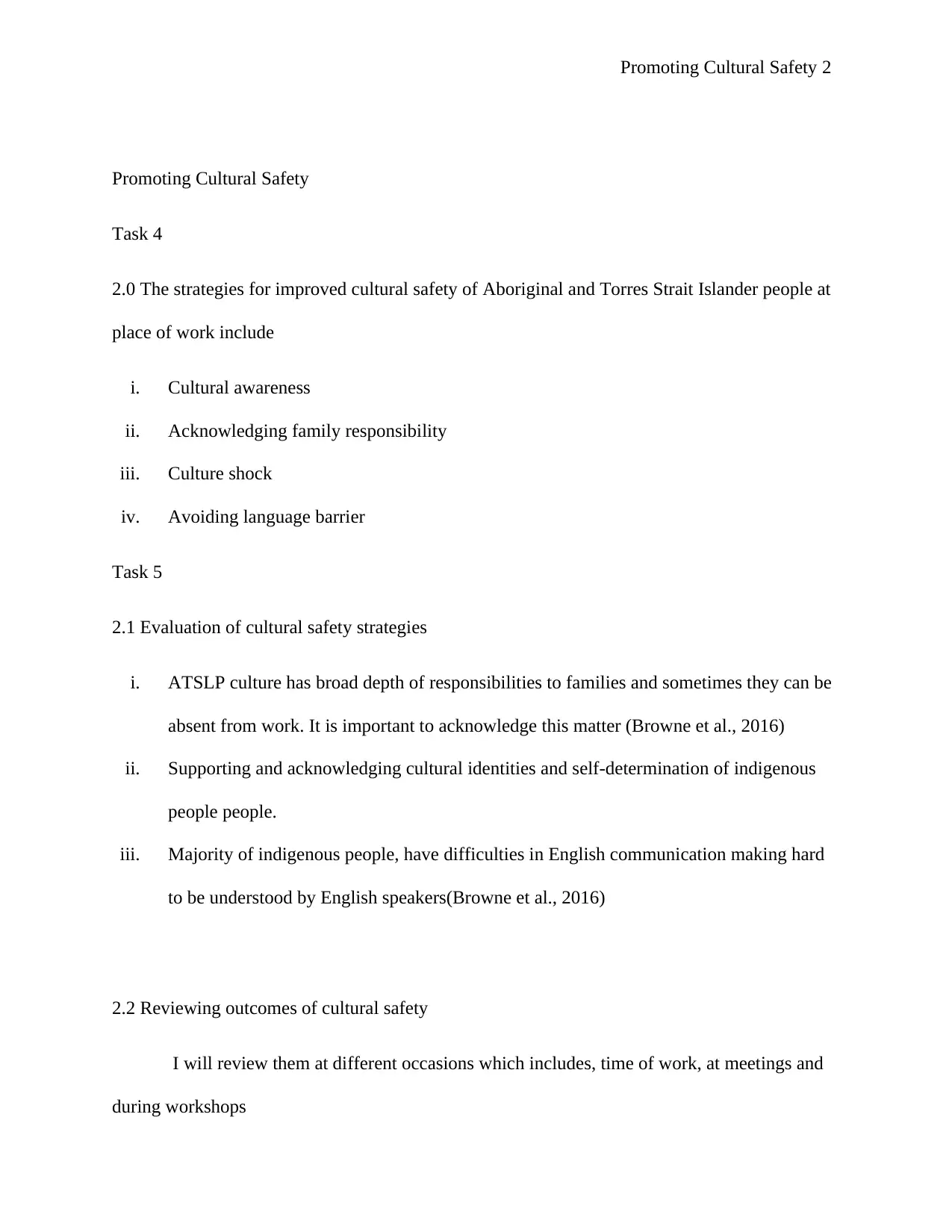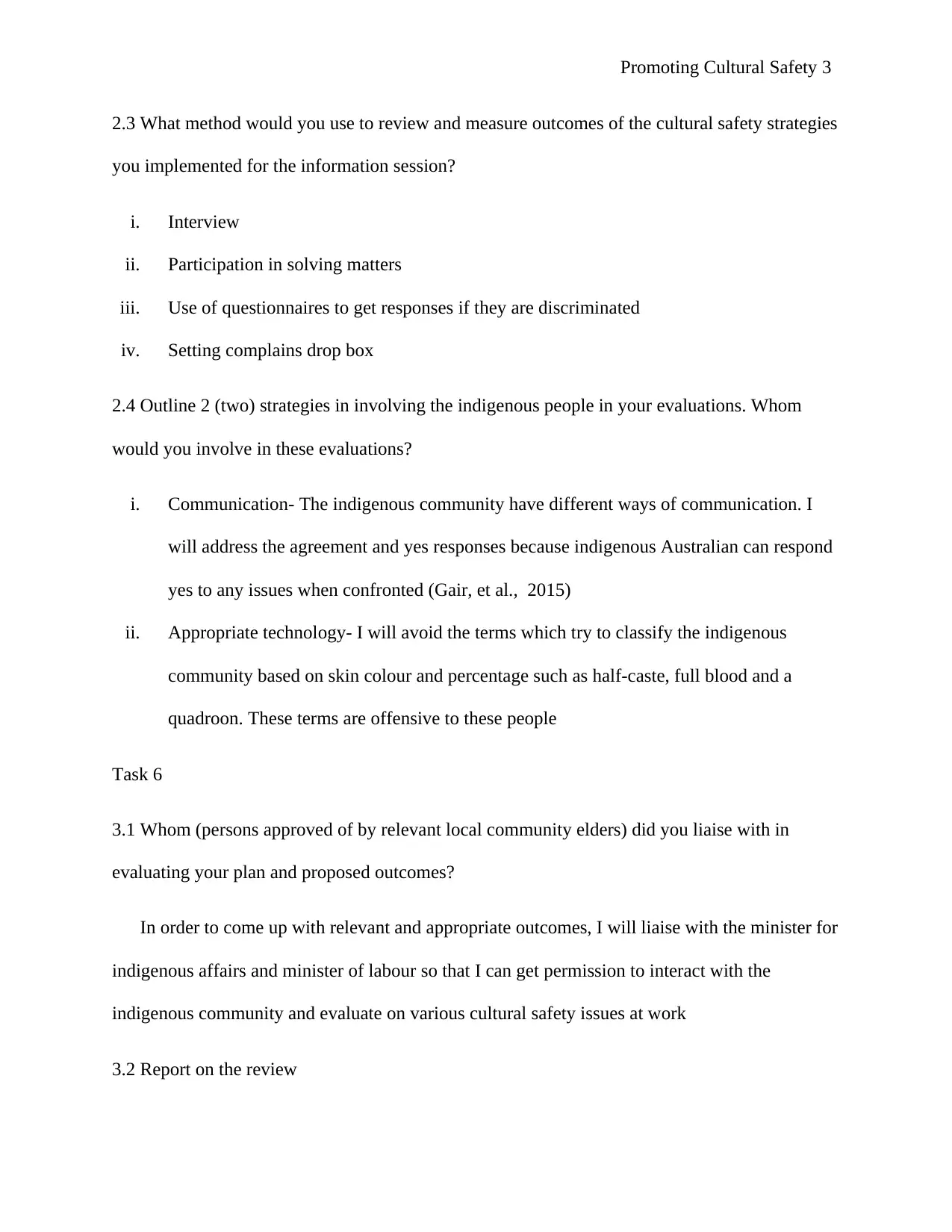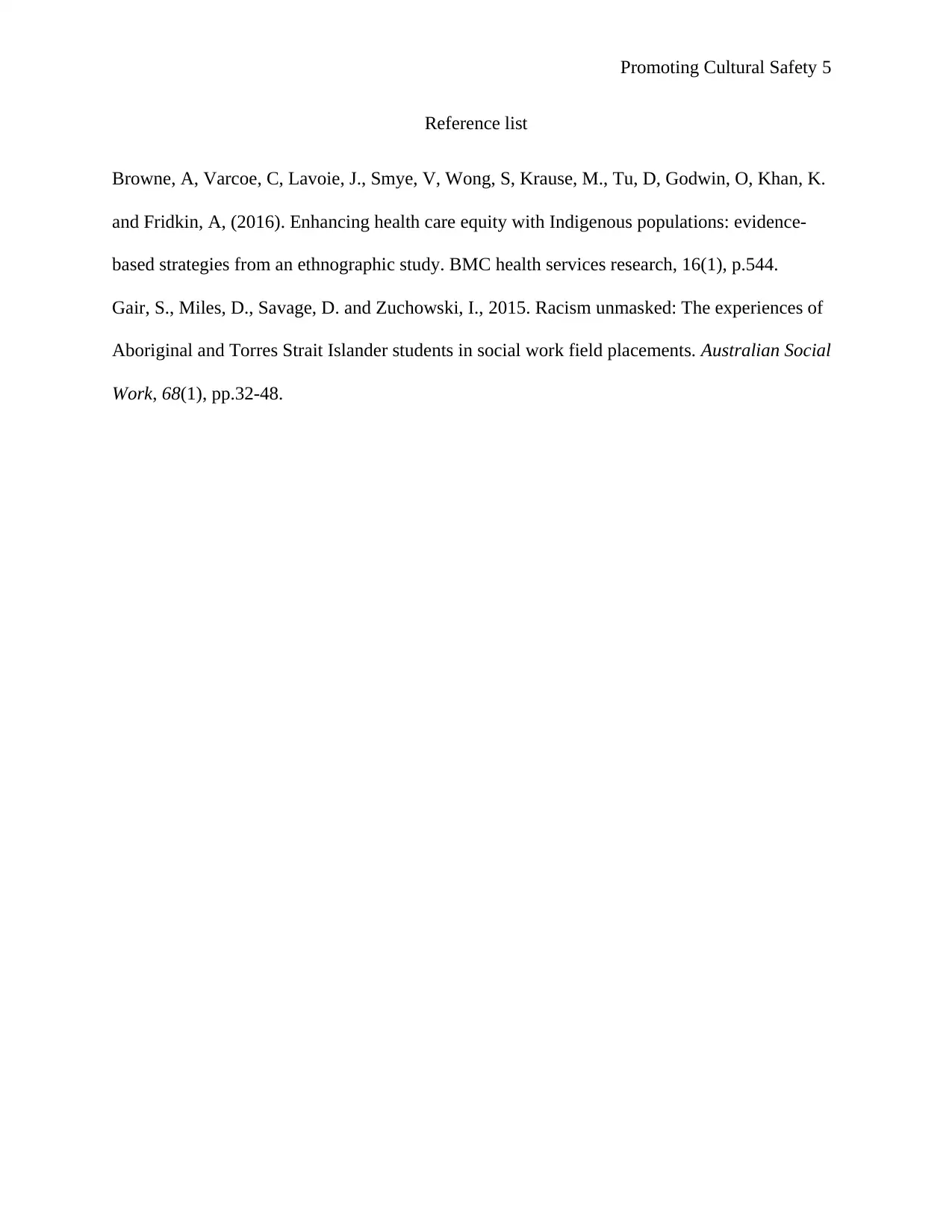Report on Cultural Safety Strategies: Evaluation, Outcomes, and Review
VerifiedAdded on 2020/05/11
|5
|658
|195
Report
AI Summary
This report focuses on the implementation and evaluation of cultural safety strategies in the workplace, specifically concerning the well-being of Aboriginal and Torres Strait Islander people. The assignment addresses key aspects such as cultural awareness, acknowledgment of family responsibilities, and overcoming language barriers. The report evaluates the effectiveness of these strategies, reviewing outcomes through various methods like interviews and questionnaires, and proposes strategies for involving indigenous people in the evaluation process. Furthermore, it outlines the importance of consulting with relevant community members and revising strategies based on feedback, aiming to improve inclusivity, address discrimination, and promote a safer work environment. The report also highlights the need for indigenous people to be involved in decision-making and be promoted accordingly.
1 out of 5












![[object Object]](/_next/static/media/star-bottom.7253800d.svg)